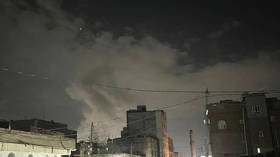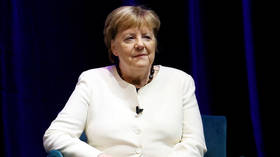Aircraft reforms to see emergencies covered and focus on regional airlines
Russian airlines will have to reserve up to a quarter of profit for emergencies like flight cancellations and stranded passengers.
RT spoke with Valery Okulov, Russia's Deputy Transport Minister, who explained that the measure, which many airlines claim as impossible, has alternatives.
VO: “A year ago we faced situation where 1000s of passengers who had tickets in their hands were left at airports and could not get money for their tickets. It's unacceptable. The government created a reserve of 150 million dollars to transport passengers in these kinds of emergencies. The company that eventually transports passengers finding themselves in this type of situation will get money from the government. In order to return money to the government a new mechanism has been created.
Airlines will have 2 choices : The first is a create a financial reserve equal to their quarterly profit .The second – is for the aircarriers themselves to create funds, that will accumulate money to return to the government in the event of an emergency over the next 2-3 years.
The Government has nothing to do with that fund, it's only for the companies. This won’t cut the competitiveness of our companies in comparison to foreign air carriers.
From each ticket sold there will be a commission of 1.5 – 2 dollars that will go to the company fund.
In the current financial situation, for most of the companies to reserve a quarter of their profit is next to impossible for most airlines.
Currently, there are no profitable aircarriers. Most of them balance on the edge of profitability. There has been a serious fall in regular and charter traffic. The most serious situation is in cargo sector where traffic has fallen over 30%.”
RT: When can the regulation issues concerning the small aviation in Russia can be resolved?
VO: “Small aviation development will lead to regional carrier development, and it's a priority for the us right now. we are losing connection with distant regions due to a lack of that smaller aviation capacity.
The new rules include new notification methods for small aircraft flights. Negotiations are not easy but compromises have been found. The new rules will be handed into the government next month and are likely to be adopted by the end of the year.
There is an understanding that current regulations are artificially holding back the development of small aviation companies. Currently this sector accounts for just 2% of all air traffic, and it should be around 20-25%.
According to the experience of Canada and U.S., small aviation brings much more to the budget than long-distance flights.”
RT: Why, do you think, Russia still lacks a vast market of low cost companies?
VO: “Because there is no market. For development of low cost travel there are 3 essential factors. The first is large scale passenger flows between cities. We have only 3 routes like that – Moscow – St Petersburg, Moscow – Sochi in summer, and let's say Moscow- Ekaterinburg. Second – using alternative airports – its less expensive, but we simply don't have them. And third – reservation and purchase through the internet. There is progress in using the internet, but not enough. “
RT: Can Russia produce small aircraft itself or do international companies need to step in?
VO: “Currently the United Aircrafts Corporation has no small planes in its production lines. That's why the government has decided to cancel customs duties on aircraft of less than 20 tonnes or 50 seats – they are the type used for regional carriers. I think that demand for these planes will start up production in Russia.”













